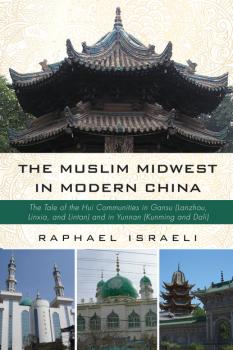ТОП просматриваемых книг сайта:
Raphael Israeli
Список книг автора Raphael IsraeliАннотация
In the present upheaval in the Islamic world, as chaos, war, and vengeance are overtaking order, security, and civil rights, Muslim radicals have been venting their frustrations among their minorities, most of whom are Christian: from ancient Chaldeans in Iraq to Orthodox denominations in Turkey; from Catholics in Indonesia and Malaysia to remote and isolated Christian communities in Afghanistan and Pakistan. Related to this vast and escalating phenomenon has been the violent activity of some within the Muslim minorities in the West, who have migrated there in the past few decades and now seek revenge against their former colonial masters. This is taking place in the context of fast-increasing numbers of Muslims in the West, the result both of high birthrates and of escalating legal and illegal immigration from Islamic lands.
Аннотация
For several centuries now the Muslim Midwest, notably the Northwest and the Southwest, had been the «Muslim country» of China. Although Muslims only sporadically constituted local majorities in some towns, villages, counties, and neighborhoods, they remained overall a minority in the overwhelming Han landscape of China. Nonetheless, in those areas the Muslim-Hui culture has had its greatest impact and visibility. It was in those areas in mid-nineteenth-century China that major Muslim rebellions took place with the stated purpose of seceding from the Kingdom and establishing independent Muslim states. Almost two centuries later, those areas still bear the traumas of the past–crushed Muslim rebellions with massive massacres of Muslims, who lost their predominance and are reluctant to invoke past glories. The result has been a multitude of sects and sub sects, notably the Menhuan, which has no parallel in other parts of China, and even a new hybrid–the Xidaotang.
Аннотация
This polemical volume tackles the thorny and controversial issue of the vastly different narratives told (or manufactured) by the two parties of the conflict in the Middle East (the Arabs and Israel), focusing on 1948, where it all started. While all sides in this debate have vested interests, this author included, an attempt has been made here to reflect the factual truth on the events, although their interpretation will always remain controversial. Although the book argues principally with Benny Morris, the founder and leader of the so-called New Historians, it encompasses a wide array of controversial topics, like the evaluation of the 1948-49 War, the morality of the war (or the necessity to wage it as it was), and its main reverberations, such as the continuing conflict after seven decades, the aggravation of the Palestinian minority in Israel, and the essence of what history means. Israeli argues that the current debate between the so-called Old Historians and the New Historians–itself healthy if and when it is kept to the point and not allowed to degrade into personal libel and recriminations–is not really as unbridgeable as is often claimed. Both sides have erred at points and both sides have some important and complementary light to shed on the contentious events surrounding the birth of Israel.



